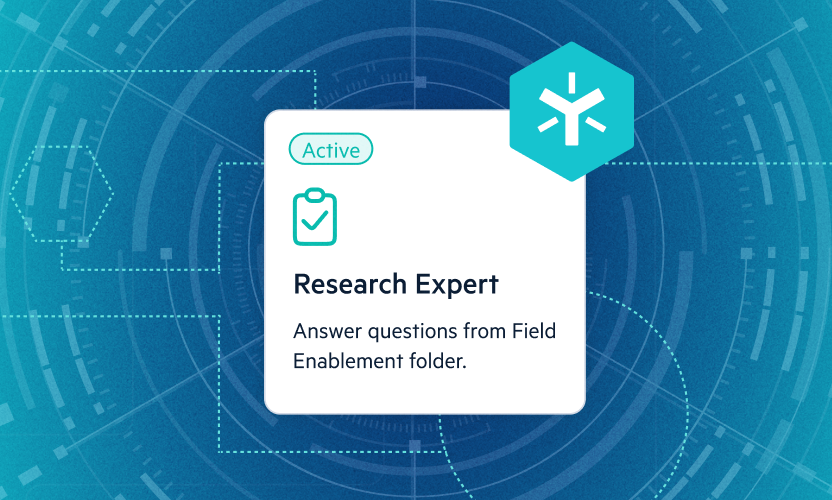
Overcoming Workflow Challenges in Banks and Credit Unions with Egnyte
In the Spring of 2023, Silicon Valley Bank (SVB), a regional commercial bank in the Bay Area, collapsed due to a bank run. It was the third-largest bank failure in U.S. history, since the 2008 financial crisis.
At the time, I worked at an online challenger bank (neobank) in San Francisco, offering banking and investment products to businesses. Thousands of ex-SVB customers sought a new bank to store their cash. As a modest 70-employee, series B startup, we needed to grow assets under management (AUM) and were eager for their business.
What could go wrong?
Simply put, we could not handle the sudden spike in demand.
The operations team handled applications in a white-glove fashion, working one-on-one with customers to collect documents, run know-your-customer (KYC) reviews with compliance, and coordinate follow-ups. While this manual workflow worked when we received a handful of applications per week, it did not scale when a few became hundreds. Documents got lost in emails and statuses were improperly tracked, causing customers to grow impatient and flee to competitors.
We left hundreds of millions in AUM dollars on the table.
While the SVB collapse was unique, operational nightmares are not new for Financial Institutions (FIs), especially small-to-medium-sized banks and credit unions. In my nine years in financial services, I’ve spoken to countless professionals who faced similar challenges in workflow management.
Common workflow challenges at banks and credit unions include:
- Fragmented data: If a customer has a deposit account, personal loan, and a credit card from the same credit union, the divisions may not talk to each other. Due to sensitive data, it’s common to be heavily siloed, locked down to small groupings, each with granular permissions.
- Resources dedicated to regulatory compliance: Whether a bank has 50 employees or 50,000, it will still be subject to regulatory scrutiny. One of the most significant issues I faced at the neobank was the amount of human capital dedicated to audit exams and ongoing monitoring, beyond the compliance function. At least one month of the year was all hands on deck with auditors, slowing innovation compared to our unregulated FinTech competitors.
- Lack of automation: Small and commercial banks that pride themselves on personal touch and building relationships are often hesitant to implement workflow automation, fearing it will lower their white-glove experiences.
- Scalability issues: Large swings in customer demand are common in banking. Interest rates, business cycles, and holiday and tax seasons can make forecasting accurately difficult for banks. If resources are misaligned, banks may leave new business on the table.
- Resistance to change: It’s common for mid-sized banks to have a risk-averse culture and to stick with the status quo. In this heavily regulated industry where any business interruption is highly consequential, it’s no wonder why banks may perceive change as unnecessary.
In today’s competitive climate, it’s more important than ever for banks to have the proper infrastructure to streamline client workflows, create value for customers, and stay ahead of the competition, all while remaining in regulatory compliance – and that doesn’t have to come at the cost of relationships. That’s one of the main reasons why, after almost a decade of experience working in banking and credit, I’m now dedicated to helping financial institutions protect their data and streamline efficiency through Egnyte’s content collaboration and security and governance software.
Egnyte lays the foundation for banks and their workflows:
- Security and Governance: Security is paramount in the banking sector and the foundation for effective workflows. Egnyte’s Security and Governance platform provides robust security features such as data classification, encryption, and access controls. This ensures that sensitive financial data is protected and meets regulatory requirements.
- Compliance Management: Compliance with regulators such as the Federal Reserve, Office of the Comptroller of the Currency (OCC), and National Credit Union Administration (NCUA) is critical for banks and credit unions. Egnyte helps FIs maintain compliance by providing audit trails, data retention policies, and granular access controls, allowing administrators to enforce compliance requirements effectively.
- Collaboration Tools: Collaboration is essential for efficient workflows in banking, especially for teams working across different locations or departments. Egnyte provides collaboration tools such as file sharing, version control, and real-time co-editing, enabling teams to work together seamlessly.
- Robust Integrations: To prevent fragmented data, Egnyte integrates with a wide range of third-party applications commonly used at banks and credit unions, such as Salesforce, Microsoft 365, Practifi, and more.
- Scalability: Banks deal with large volumes of personal/transactional data and require solutions to accommodate growth and changing business cycles. Egnyte offers scalable storage options and flexible add-ons, allowing banks to expand capabilities easily as business needs change.
While planning for seasonality in banking and credit is generally easy, it’s not easy to plan or staff for unexpected opportunities like the SVB bank run. As our industry continues to become
more complex, these opportunities are likely to become more common as well. That’s why taking advantage of today's slow periods is so important to build the needed infrastructure for tomorrow.
Technology doesn’t mean changing a human process to be void of personal touch. Instead, technology does what it’s good at—keeping track of thousands of touchpoints across an organization—giving humans more time to seize opportunities never before possible.
This blog is the first in our series about the impact of workflows in the financial services industry. Stay tuned for more blogs covering workflows in wealth management, PE/VC, insurance, and investment banking.





